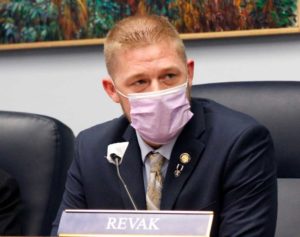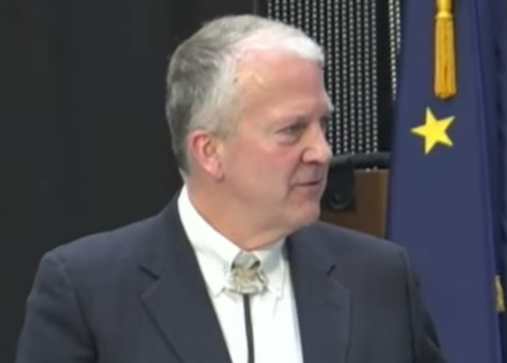
Nine hundred miles of highway winds through Interior and Southcentral Alaska, beginning at the border with Canada and ending on the Homer Spit at the “End of the Road.” Covering an even larger area, the Alaska Marine Highway system connects 3,500 miles of coastal Alaska from the Aleutians to the Inside Passage.
Every year, thousands of visitors and residents traverse these highways in cars and on ferries. Seeing this opportunity, the Military Order of the Purple Heart (MOPH) has been working for years to designate Purple Heart cities, boroughs, roads, and bridges across the US to honor and thank veterans who have been wounded or killed in combat while serving our nation.
The MOPH began efforts in Alaska in 2008 with the designation of the highways between Alaska-Canada as the Purple Heart Trail. Nearly 15 years later, my colleagues and I in the Alaska Senate unanimously passed Senate Bill 203, a bill that I sponsored that extends Alaska’s Purple Heart Trail highway designation. Once the House passes the bill, the Trail honoring veterans’ service will run continuously from the Alaska-Canada border down to the End of the Road in Homer and on the entire Alaska Marine Highway System.
At approximately 4,500 miles, Alaska’s Purple Heart Trail will be the longest in the nation’s already-expansive network of Trails and will include the first-ever marine highway.
It is a fitting record for the years of dedicated effort and thousands of hours given to the project by the MOPH, Alaska MOPH state and chapter Commanders, and veterans with the support and cooperation of numerous city, borough, and state elected officials and employees.
With more resident veterans per capita than any other state, the Purple Heart Trail serves as a tangible demonstration of Alaska’s appreciation for the sacrifices made by our wounded and fallen soldiers. Of our 65,000 veterans and approximately 21,000 active-duty military members, many carry with them the scars that earned them a Purple Heart medal. [content id=”79272″]
Signs on the highway and AMHS ferries will stand as a thank you to veterans and an opportunity for those traveling to or around our great State to begin solemn conversations about the meaning of the Purple Heart and the sacrifices that Purple Heart recipients made.
In the words of combat-wounded Army Veteran and Alaska Commander of the MOPH, John Knott III, “Let everyone who drives or rides the ferry on the Purple Heart Trail think about the risk all veterans willingly take when they serve our country in the military and know that Alaska recognizes and honors the sacrifices made by Purple Heart recipients and their families.”
In 2008, the Military Order of the Purple Heart, spearheaded by future National MOPH Commander Ron Siebels, partnered with Senator Johnny Ellis and the 25th Alaska State Legislature to designate the highway between the Alaska-Canada border and Fairbanks as the Purple Heart Trail. In subsequent years, cities, boroughs, university campuses, roads, bridges, and even the State of Alaska have been given the Purple Heart designation.
Like his predecessors who established the original Trail, Commander Knott and the Alaska MOPH spent the last three years reaching out to communities along the highway we propose to designate, gathering letters and resolutions of support from each one.
The Purple Heart Trail designation reflects Alaska’s heart for our veterans and the enthusiastic support for the Trail’s extension by my colleagues and communities around the state has decisively demonstrated that it is time to make it happen.
It is an honor to partner with the Alaska Military Order of the Purple Heart on this legislation and an even greater honor to serve those who have paved the way for our freedom.
Senate Bill 203 unanimously passed the Alaska State Senate on Monday, April 11th, 2022. The bill will now be considered by the House of Representatives. If passed, construction would be completed this fall.[content id=”79272″]






